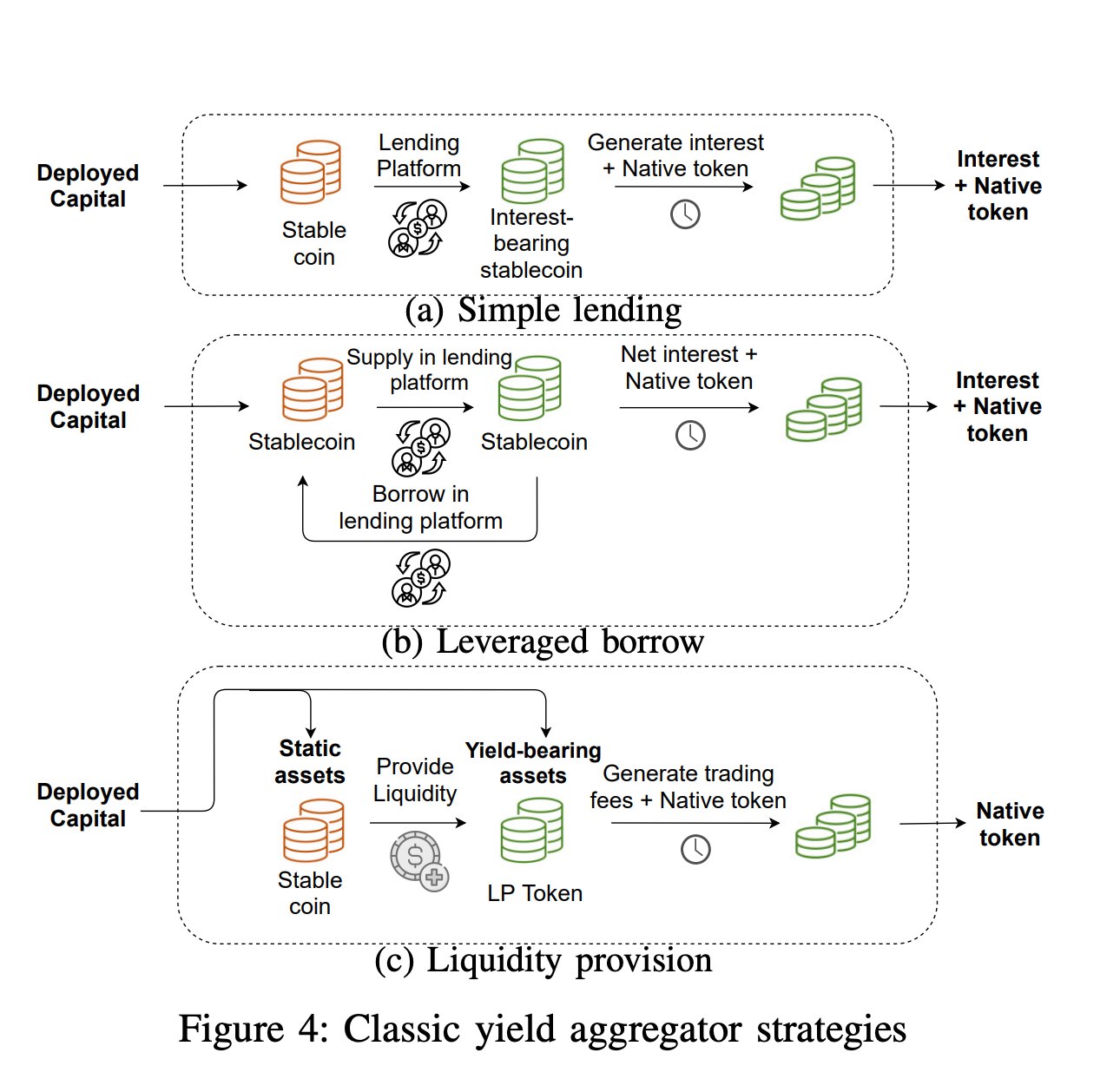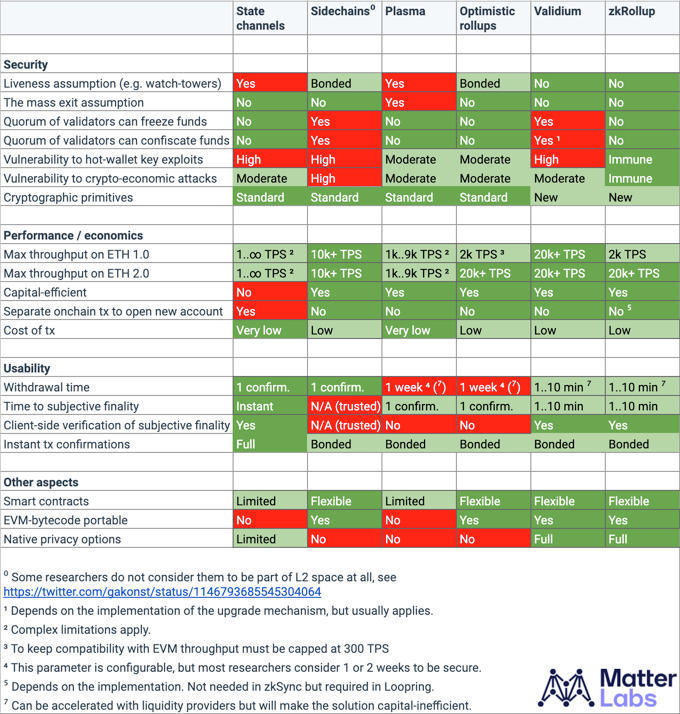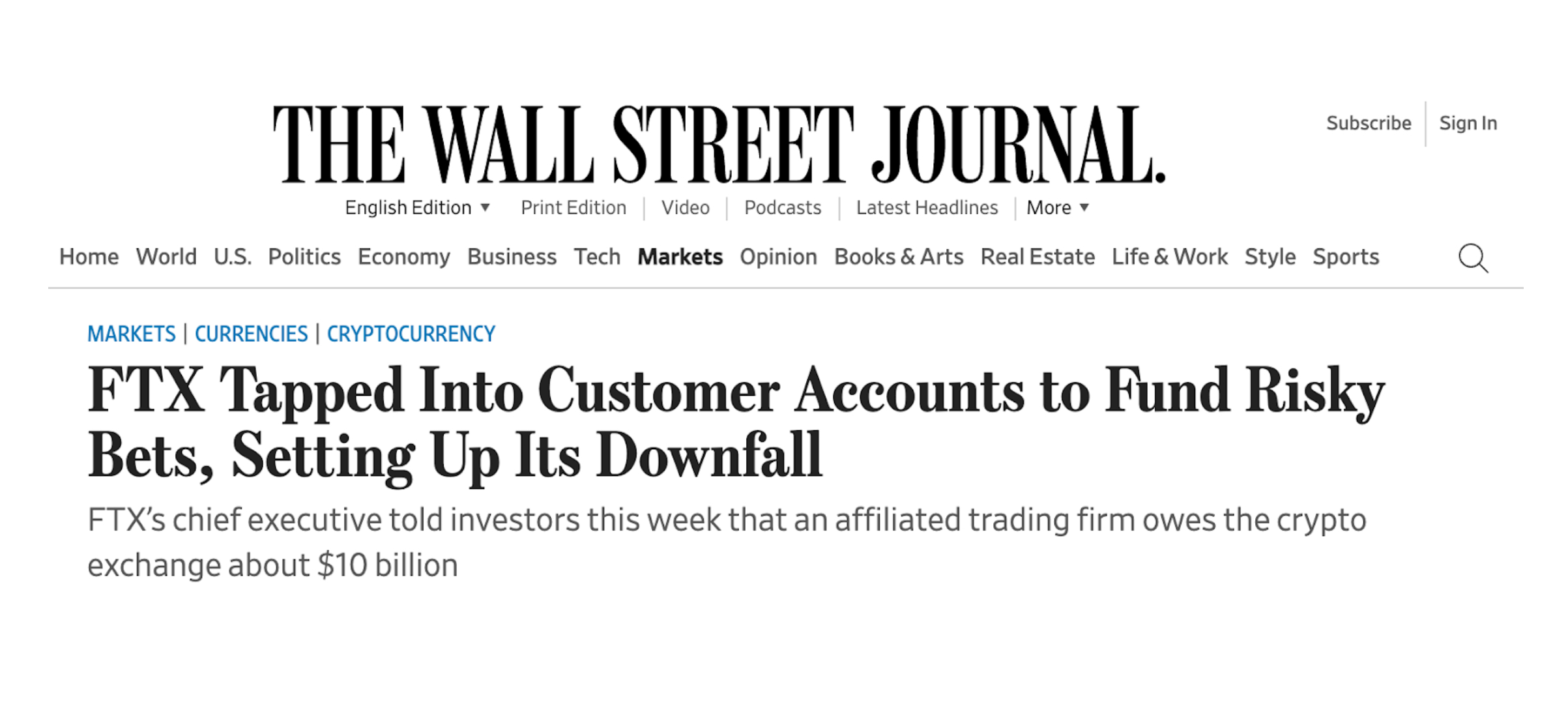6 Main Reasons Why Web3 Has Not Been Mainstream Adopted
Author: ChainLinkGod
Compiled by: The Way of DeFi
Web3 represents a fundamental evolution of the internet as we know it today, replacing centralized gatekeepers and intermediaries with decentralized protocols and community-held ownership. The inherent characteristics of Web3 are highly appealing to those who live in the crypto environment. However, we must also acknowledge one point: Web3 is still a niche industry that has not yet been adopted by the mainstream.
While claims surrounding the limitations of blockchain scalability are most often cited as the reason for the lack of adoption of Web3 (which usually serves as a reminder that we are still in the early stages), I believe this is just one of many reasons why the average consumer does not consider Web3.
This article will analyze the six main reasons why Web3 has not been adopted by the mainstream, and what can be done to realize the true benefits of this technology for society.
01 Arcane Techno-Babble
Web3 can be a difficult concept to explain to newcomers, especially with a lack of a universal definition. Everyone has their own interpretation of its most valuable features. This inevitably leads to some questions, such as: "Why should I care about Web3?" and "How does Web3 benefit me in my daily life?"
Various attributes of Web3 are often mentioned—decentralization, censorship resistance, immutability, transparency, etc. These explanations often include an excessive technical breakdown of Web3 infrastructure, filled with industry jargon and techno-babble (technical terms that are difficult for the average person to understand).

While such explanations help to understand the core value of Web3 and the technical details of its underlying implementation, they are merely a means to an end. The real question that must be answered is: how do these arcane concepts and intangible values ultimately translate into Web3 applications that the average consumer can understand and be interested in participating in?
Of course, to answer such questions, one must be able to point to clear real-world use cases.
02 Speculation-Driven Circular Economy
The first major Web3 application is the creation of digital tokens (such as Bitcoin) with predefined monetary policies and built-in peer-to-peer payment capabilities—all without the need for centralized intermediaries. While digital tokens are attractive to many, their utility as mere tokens for transferring value from one person to another is actually quite limited compared to traditional currencies, and they have obvious disadvantages in terms of volatility and limited acceptance by merchants.

DeFi vs TradFi, DeFi removes the intermediaries in value transfer
If the traditional financial system does not have obvious systemic failures, the value proposition of merely minting and transferring tokens is insufficient. This realization ultimately led to the emergence of the next clear use case for Web3: decentralized finance (DeFi). DeFi extends the use of digital tokens beyond simple value transfer and applies them to financial primitives that consumers are already accustomed to, such as lending, borrowing, exchanging, and hedging.
However, given that many DeFi applications still primarily focus on tokens, a speculation-driven circular economy has emerged, with its value partially derived from speculative monetization. This is not surprising, as Web3 natives who already hold tokens are clearly the initial product-market fit for DeFi products. However, if consumers are not owners of crypto tokens, DeFi seems more like a casino than an alternative financial system.

Examples of speculation-driven "yield farming" in the DeFi circular economy (source)
Tokenized assets to the rescue?
This is not to say that all DeFi today is purely circular. Stablecoins are tokens pegged to the value of another asset (such as fiat currency) that can create what is known as "programmable dollars," which can be traded globally and settled in seconds. Today, digital currencies are more closely related to the average consumer, as their lives revolve around acquiring, saving, and spending this currency.
Currently, there are ++140 billion dollars worth of stablecoins++ available for use in DeFi applications, making the DeFi ecosystem more useful and relevant to consumers, for example, by creating on-chain savings accounts. When applying the value attributes of Web3 to assets that consumers are already using today, the "why" of Web3 becomes much more self-evident.

Stablecoins are the "Trojan horse" that brings smart contracts to the masses. Why? They may be the first and only fully sustainable and rapidly scalable use case for cryptocurrency in the real world today.
Beyond stablecoins, I believe this general approach of on-chain financial reification—simulating and re-implementing existing real-world financial primitives on-chain—provides a clear path to introduce Web3 applications to the average crowd in a way that is relevant to everyday life.

In particular, tokenized real-world assets (RWAs)—stablecoins are one subset—provide opportunities to shorten the speculative cycles present in DeFi. They can encompass real estate, corporate/government bonds, revenue-sharing agreements, commodities, and any other assets in the traditional financial economy. However, tokenized RWAs do not come without costs, especially in terms of decentralization and trust minimization. Nevertheless, Web3 applications supporting RWAs can scale the value proposition of Web3 by an order of magnitude.
03 Hyper-Financialization
While DeFi, stablecoins, and RWAs offer tremendous opportunities to extend Web3 into the mainstream, it must be considered that the average consumer does not actually care much about finance. They may not use many financial services and do not care about the technical details of how financial products settle in the backend. Ultimately, they just want to engage in commerce, such as using a credit card to buy some groceries. If the primary pitch of Web3 is based on hyper-financialization, a significant portion of the potential market will be completely missed.
This is where much of the confusion about Web3 arises. If Web3 is a "decentralized version of the existing internet," then where are all the typical internet use cases we are accustomed to? Information sharing, social media, video streaming, online commerce, or the blog you are reading right now?

Web1 vs Web2 vs Web3
Web3 is about defining how content producers and consumers interact, so where are these Web3 content platforms?
While non-financial use cases of Web3 are still in their infancy, some clear use cases are emerging. For example, a Web3 implementation of social media platforms could take the form of decentralized protocols where users truly own their online profiles, including all the content they create and their follower/following social graphs. Their profiles could then be ported to various front-end interfaces with different content moderation policies.
Aave's Lens Protocol is an example of a decentralized social graph protocol aimed at achieving this goal. By storing interaction information on the Polygon PoS blockchain, users' social graphs can be ported across applications. The ability to own one's social identity is a powerful Web3 primitive that directly addresses concerns about existing platforms.

Decentralized social graph protocols allow for independent interfaces to be built on top of them (source)
Decentralized social media may or may not be the ultimate killer non-financial Web3 application. Instead, it could be the creator economy, gaming, the metaverse, DAOs, or any other use case. However, one thing is clear: we must expand our industry beyond pure hyper-financialization.
04 UX Landmines
In theory, Web3 offers a user experience (UX) far superior to the current state of the internet. Web3 eliminates the need to manage excessive unique usernames and passwords for each website or to delegate to a centralized service provider; it allows users to authenticate themselves with a single private key that can be universally used across any Web3-enabled application. This not only greatly simplifies the user experience but also allows users to truly own their data and access applications directly without the approval of centralized intermediaries.
When it works, it works very effectively.

Differences in login experiences across different versions of the web (++source++)
However, this is only "when it works." In practice, users must navigate different incompatible authentication standards, manually handle private keys and seed phrases, download and learn how to use new browser extensions or mobile wallets, and adjust all of this to fit different blockchains with their own set of standards. The result is often frustration and confusion.

Another standard will solve Web3 authentication issues (source)
Seed phrases? Chain IDs? Gas prices? Token approvals? Transaction recovery? Finalization? If Web3 native users today want to interact with on-chain Web3 applications, these are all quite arcane and highly technical concepts they need to understand. Even with a good understanding of these concepts, interacting with Web3 applications often feels like walking on eggshells, hoping that something in the interaction process (hardware wallet -> Web3 extension -> frontend website -> RPC node -> blockchain) does not break.

Just as users do not need to understand the underlying architecture of Web2, they should not need to understand the technical nuances of Web3 (source)
Currently, the poor user experience of Web3 is not the fault of any specific project or protocol. There are many ongoing efforts to unify the experience. However, it is undeniable that the user experience of Web3 today is far from ideal. Secure private key management is also a serious responsibility, something consumers have little equivalent of in the Web2 world. Unfortunately, if your seed phrase is lost, there is no corresponding "reset password" option.
Interfaces like the one below are so prevalent in Web3 that it is no wonder the churn rate for new users is so high.

"Connect Wallet" is a rabbit hole in itself, good luck
Overcoming this UX barrier requires a first-principles approach to minimize the technical details and risks faced by users. I believe this will ultimately lead to the emergence of Web3 "super apps" that abstract away the various complexities inherent in Web3 infrastructure and only present users with what they need to see to interact in the Web3 world. Coinbase and Robinhood are two examples of consumer-facing applications that create frictionless Web3 wallets leveraging their experience.
In particular, Coinbase has directly integrated a Web3 browser into its main mobile application. The browser uses secure multi-party computation (MPC) to generate private keys in a distributed manner. The result is a "semi-custodial" wallet system where the user's private key is split into three parts, and any two parts are required to sign transactions. The user and Coinbase each hold a part of the key, while the third part can be kept as a cold storage solution or with a trusted third party. If users cannot access their devices (and thus cannot access their key parts), a recovery mechanism can be used to regain access to the wallet.
While not as trust-minimized as pure self-custody solutions, this type of compromise significantly improves the user experience and may be a safer solution for many users who are prone to accidentally losing keys. Other solutions, such as social recovery, also offer a viable path to create the type of UX that users are already accustomed to in the Web2 world.
05 The Dial-Up Era of Web3 Throughput
Currently, one of the most frequently mentioned limitations of Web3 is the limited scalability and high latency of widely adopted public blockchains. As I discussed in my previous article on the true trust model of blockchain, scalability is often equated with increased transaction throughput. However, a more comprehensive explanation of scalability is increasing transaction throughput while maintaining low verification costs for the blockchain ledger. Higher throughput blockchains do exist, but their transaction throughput still has an upper limit, and they often require trade-offs in decentralization, security, or reliability.

The blockchain trilemma illustrates the trade-offs that traditional blockchain designs must make
As Vitalik Buterin once said, "The internet of money shouldn't cost 5 cents per transaction." Given the gas costs of using Ethereum over the past few years, this is somewhat ironic, but most people generally agree that it is a valid statement. Even with clear real-world use cases and improved user experiences, if transactions take a long time to complete and cost a lot, the next billion users will not be able to join Web3.
Since this is one of the most obvious barriers to the mass adoption of Web3, many blockchains are highly focused on improving scalability, whether through parallel computing, modular rollups, sidechain clusters, or other methods. Many of these solutions are still in their infancy, but I firmly believe that scalability is a technical challenge that can and will be largely overcome in the coming years. What remains unclear is what a highly scalable Web3 ecosystem might look like: a multi-chain world of independent L1/sidechains, a multi-rollup world composed of layer 2 solutions, or high-throughput server farms as layer 1 blockchains? Perhaps all three will coexist?

Comparison of different scaling technologies from ZkSync (source)
06 The Elephant in the Room
When discussing the obstacles facing Web3, it is also essential to address the "elephant in the room" (a very obvious yet often ignored issue): the lack of a clear legal framework and guidance regarding crypto assets, decentralized applications, and decentralized organizations, which limits Web3's ability to scale globally. As with any new technology that fundamentally disrupts existing industries, growing pains are inevitable, but not everything can be solved solely through technical means.
Without a clear legal framework or policy guidelines, traditional institutions and organizations lack the clarity they are accustomed to and desire to confidently engage with the Web3 ecosystem and deploy resources within it. Once such frameworks and guidelines are in place—achieved through industry collaboration to avoid stifling innovation—institutions and organizations are more likely to genuinely begin to engage with Web3 as service providers for their existing customer base or as Web3 gateways.
It is important to clarify that I am not advocating for any specific legal framework or policy guidelines, but rather acknowledging the reality that the mass adoption of Web3 largely depends on clear and reasonable guidance. What form this will take will depend on a multitude of variables. Stifling innovation is not a viable or positive outcome for the Web3 ecosystem, but viewing Web3 as a "wild west" environment is also detrimental to its long-term growth.

Institutions may feel uneasy in an ecosystem where fraud is perceived to be uncontrolled (source)
Looking Ahead
Web3 represents a paradigm shift in the trust attributes of applications, transferring power from centralized intermediaries to deterministic and transparent software. However, like any innovative new technology, various obstacles must first be overcome before achieving global adoption. While the bottlenecks to mass adoption of Web3 are far more numerous than those outlined in this article, by directly addressing the challenges above, Web3 will be better positioned than ever to extend its benefits across all aspects of society.










